Exhibitions, lectures and demonstrations were all in evidence on the first day of proceedings
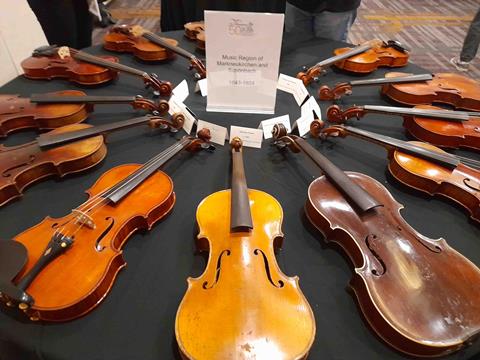
For its 50th annual convention, the Violin Society of America (VSA) has pulled out all the stops to make this year’s event the biggest and best there’s ever been.
Taking place throughout this week at the Marriott Downtown Hotel in Indianapolis, the convention is happening alongside the VSA’s 25th biennial International Violin Making Competition, which attracts instruments by luthiers from all over the world. To put it into numbers: this year 39 presenters are giving talks and presentations, while another 12 will give demonstrations of various parts of the instrument-making process.
The ‘New Instrument Exhibit’ brings together work by more than 80 makers – double the number from last year. At the Competition, over 600 instruments and bows are being examined by more than 40 judges (21 luthiers and archetiers assessing their ‘artisanship’, and the same number of players gauging their tone quality).
There are also two separate exhibitions of old instruments, the ‘Rare Instrument Exhibit’ hosting works by members of the Amati family, while the other is filled with dozens of instruments from the Vogtland region of eastern Germany.
As for the number of attendees: the main hall has seats for 400 delegates, most of which were taken this morning. ‘We’re expecting most people to come near the end of the week,’ said Kristin Siegfried Ballenger president and co-chair of the Programming Committee. ‘Before that, the competition instruments are with the judges, behind closed doors. Afterwards, everyone will be able to see them, including the prize-winning instruments.’
The first session of the day was presented by Bruce Babbitt and Brandon Godman, and revolved around the Vogtland instruments, which mainly came from the towns of Markneukirchen and Schönbach. It was designed to be an introduction to the exhibition on the floor above, curated by Babbitt and Godman, as well as to the VSA’s recently published book, Artistic Violins & Bows, The Music Region of Markneukirchen and Schönbach.
Babbitt explained the social and historical context of the Vogtland region’s making traditions (where around 40 towns and villages were all involved in the instrument making industry), explaining the division of labour, the ‘manufacturing mentality’, and the role of women in the working environment. One striking photo showed a woman carrying 18 white instruments on her back, by means of a wooden rack; we learned that she would carry them from Schönbach, where they were made, to Markneukirchen, where they were varnished. The rack is still on display at Markneukirchen’s museum.

This was followed by a presentation by Arian Sheets of the National Music Museum in Vermillion, South Dakota, which filled in even more details of the Vogtland region. We learnt several tricks of the trade from the 18th and 19th centuries; for instance, that makers would cut corners (literally) by putting in a ‘fake’ corner-block inside the lower bouts, and no block at all in the upper bouts. This was in case anyone ever looked through the f-holes to see if there was a block there. They would classify instruments for export as ‘toys’, on the basis that import tariffs on toys were much less than those for other handicrafts.
Instruments were often sold in the US as ‘Russian models’ (with rounded corners) or ‘Turkish models’ (with flame-shaped f-holes) – in fact, all came from the Vogtland. And US dealers would make up fancy-sounding names such as ‘Carlo Alberi’ and ‘Salvatore de Durro’ to sell instruments from the same area.
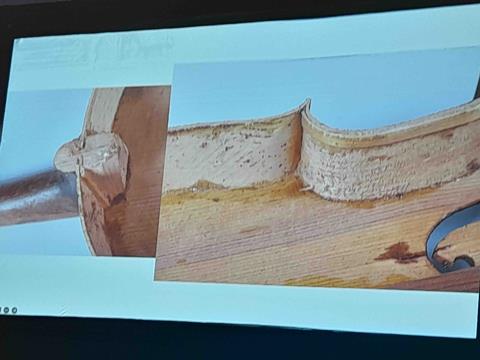
This was followed by a demonstration of works in the New Instrument Exhibit. Musicians from the Indianapolis Symphony Orchestra played on the exhibited instruments, just to give a flavour of their tone quality. One of the most interesting violins to be showcased in this way was made by Andrew Carruthers; called his Silver Leaf Fiddle, it had been given a layer of silver leaf, followed by sulphurated potash to make it tarnish. It was then left out in the sun for a few minutes to give it its final colour.
Andrew Carruthers gave one of the afternoon’s presentations on his ‘explorations in the aesthetics of violin finishes’. In the past few years he has been making what her terms ‘Off-Beat Violins’, inspired by patterns found in the natural world; here, though, he focused only on the finishing of said instruments.
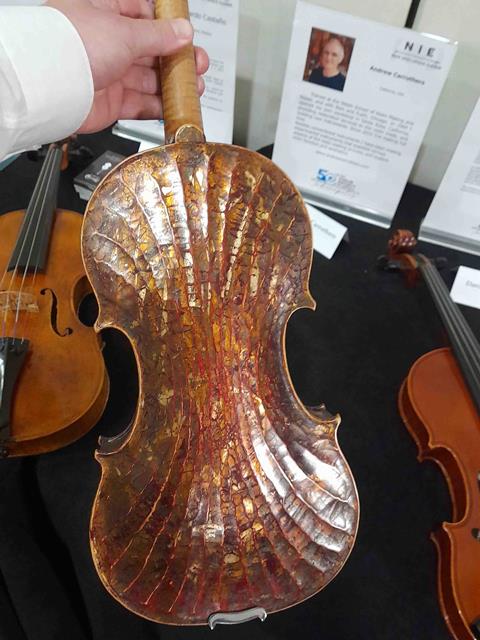
Other presentations in the afternoon came from Dmitry Tarakanov, who gave a history of acoustic research in the Soviet Union. He cleverly drew a comparison with the work of the VSA over the past 50 years: ‘Can you imagine people in the Soviet Union coming together for 50 years, inspiring each other at places like this convention, or the Oberlin Violin Makers Workshops? Or violin making competitions where you could compare your success with others? All the makers were working in isolation and secrecy.’
Read: Violin and bow makers honoured at 2022 VSA Violin Making Competition
Finally, acoustician Luca Jost presented an analysis of how the height of a violin’s back arch might influence its acoustic properties. Six violins were made, using the same techniques and wood from the same tree, only with different back arch heights. Their acoustic properties were then examined. The results showed that:
- Free–free boundary condition radiation measurements show a simple and systematic dependency of B1- and B1+ mode frequency and amplitude on back arch height
- In a playing test, no discrimination of the instruments by back arch height could be obtained
- However, in subsequent listening tests, some evidence for a non-linear dependency of the attributes ‘round/warm’ on back arch height could be found. This shows no agreement with radiation measumrent results
- The average level in the frequency range 200–780Hz of recordings from the listening test explained listener ratings in 13 and 11 out of 15 cases of the live and online tests respectively.
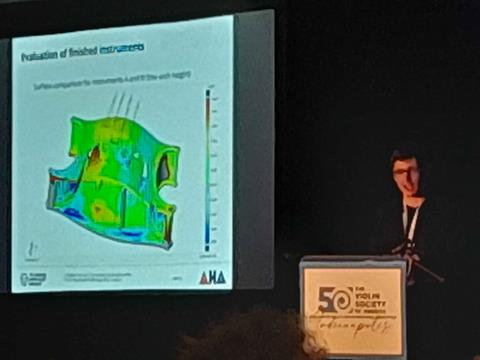
All in all, the convention enjoyed a fairly intensive first day. One other dimension to the proceedings is the vendor room, where 51 businesses, from tonewood dealers to rosin makers, are giving demonstrations of their own. The Strad is, of course, in attendance, selling books and calendars, giving away copies of the November issue and offering a 10 per cent discount on subscriptions for all attendees. So for anyone thinking of coming along to the convention, which runs until Friday: please visit The Strad’s stand and meet the team!
An exclusive range of instrument making posters, books, calendars and information products published by and directly for sale from The Strad.
The Strad’s exclusive instrument posters, most with actual-size photos depicting every nuance of the instrument. Our posters are used by luthiers across the world as models for their own instruments, thanks to the detailed outlines and measurements on the back.
The number one source for a range of books covering making and stringed instruments with commentaries from today’s top instrument experts.
The Canada Council of the Arts’ Musical Instrument Bank is 40 years old in 2025. This year’s calendar celebrates some its treasures, including four instruments by Antonio Stradivari and priceless works by Montagnana, Gagliano, Pressenda and David Tecchler.
Violin Society of America’s 50th convention kicks off in Indianapolis

Exhibitions, lectures and demonstrations were all in evidence on the first day of proceedings
 Currently
reading
Currently
reading
Violin Society of America’s 50th convention kicks off in Indianapolis
- 2
- 3
- 4
- 5
- 6





























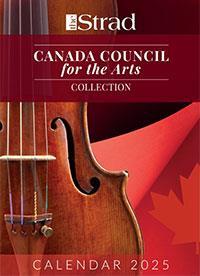























No comments yet